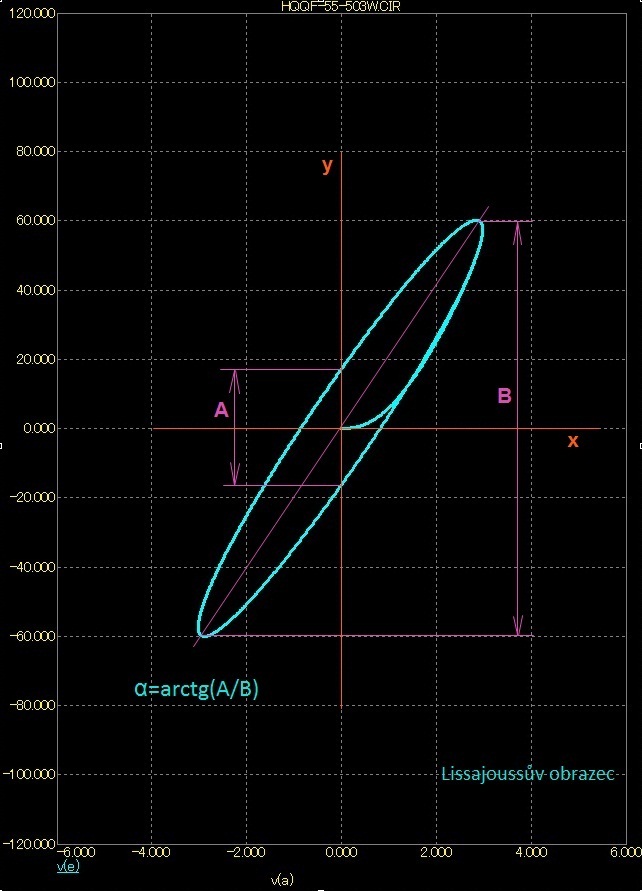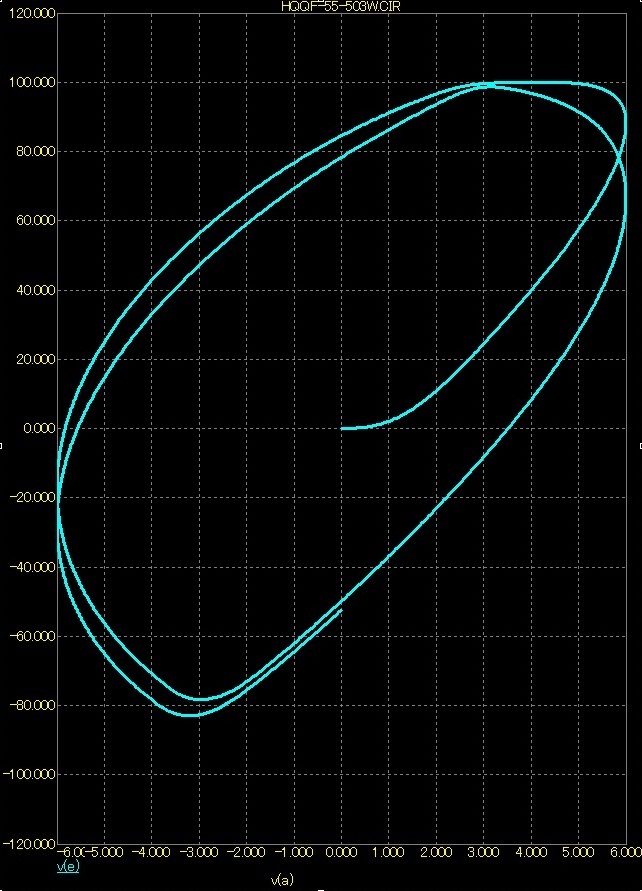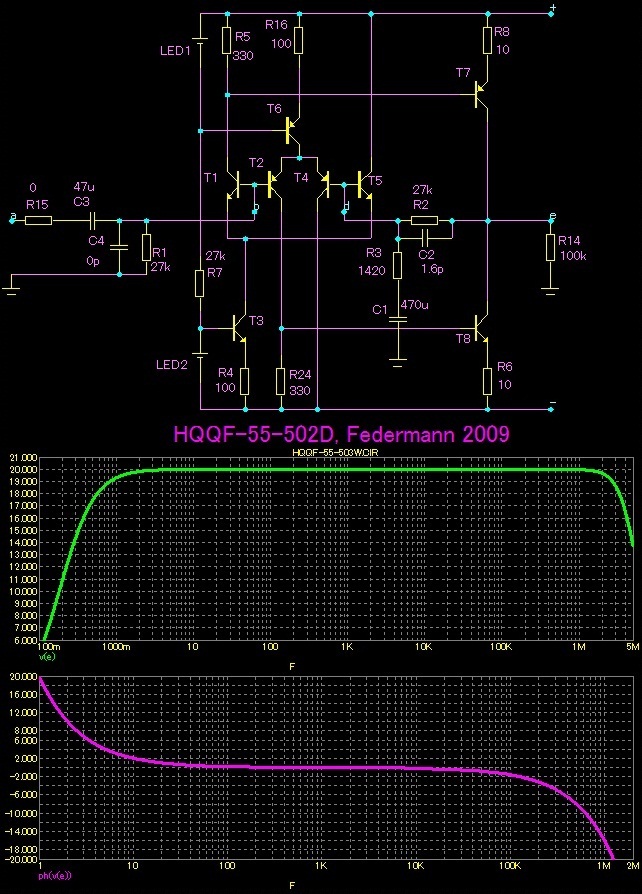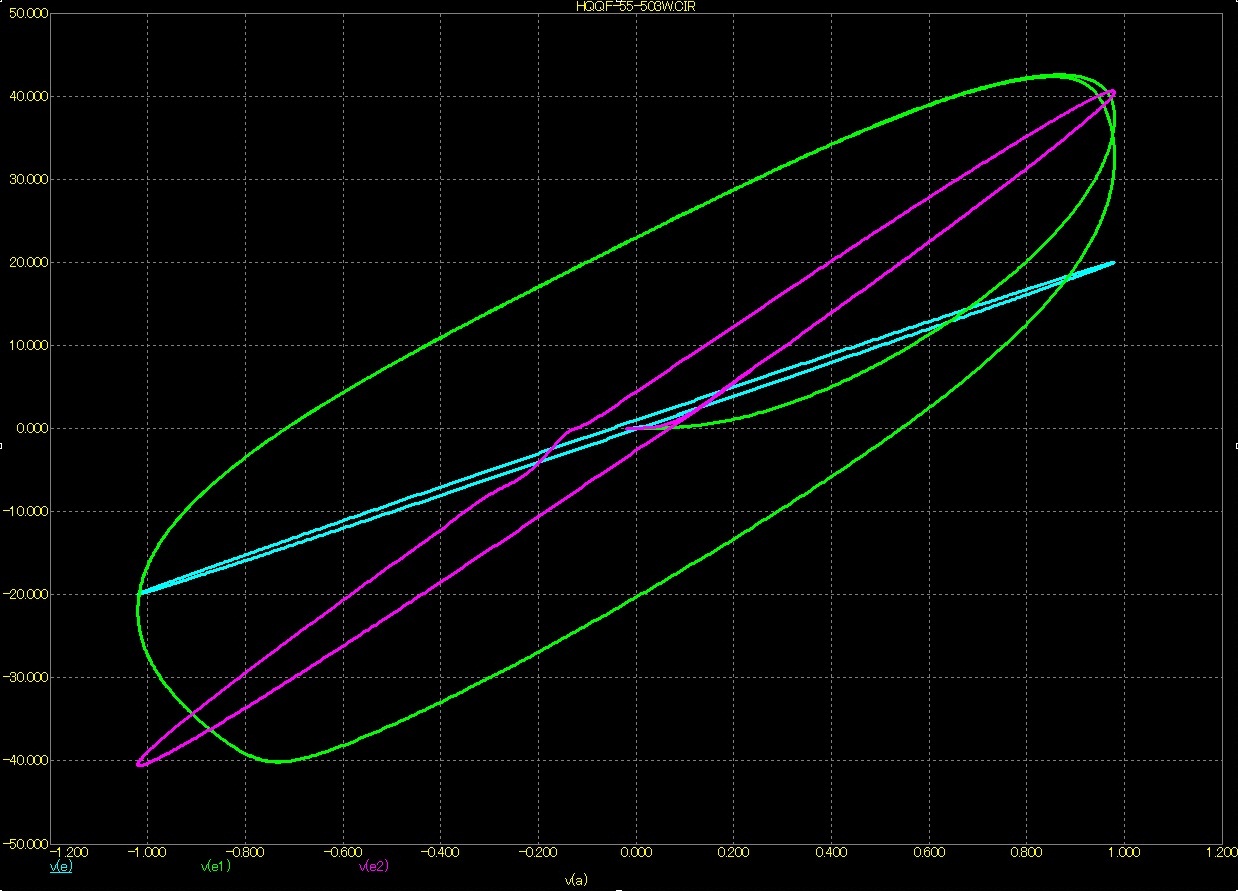Edit: And please look up phase shift. Your notion that phase shift causes THD is nonsense.
jd
I am not claiming that the phase shift caused by bias. I say that:
1st Phase shift indicates a ratio amplifier and a decrease in amplification.
2nd The decrease in gain less suppress non-linearity amplifier.
3rd The decrease in gain increases Vdif.
4th Vdif gets into the nonlinear region.
5th Cause the nonlinear, then modulation.
The worst situation occurs when large changes in audio signals and high harmonics.
I say that the phase shift may be a measure of quality amplifiers. We need to know the involvement of input circuits and the size of the output voltage.
Last edited:
I'm thinking maybe you misunderstood the latter part of my post.
Size Vdif tells how to have the entire gain amplifier.
I am not claiming that the phase shift caused by bias. I say that:
1st Phase shift indicates a ratio amplifier and a decrease in amplification.
2nd The decrease in gain less suppress non-linearity amplifier.
3rd The decrease in gain increases Vdif.
4th Vdif gets into the nonlinear region.
5th Cause the nonlinear, then modulation.
The worst situation occurs when large changes in audio signals and high harmonics.
I say that the phase shift may be a measure of quality amplifiers. We need to know the involvement of input circuits and the size of the output voltage.
Ahhh, yes I think I get it better now.
OK:
1 - yes, if you mean by ratio a roll-off;
2 - yes, ther is less excess gain to let feedback decrease the distortion;
3 - yes, less excess gain, more Vdiff;
4 - Aha, now I see what you mean. Vdiff gets bigger, and Vdiff is part of the input signal, so now that combined input signal gets into the non-linear region of the LTP so that increases the distortion. I need to think about that.
5 - see 4.
OK so I think we have here the crux of the matter. What does everyone else think? I'm not if we have cause and effect correct, but I may be wrong.
jd
OK...so I give to the input LPF, which cause, that your dif amp don't get high frequencies and Vdif will be near zero. In this case, by your words, amp will not produce distortion...amazingly simple....
Yes, he will gain, so great that Vdif was zero, the zero bias. So simple and not achievable.
What does everyone else think? I'm not if we have cause and effect correct
This is exactly what's wrong here, the causality principle violation. It reminds me of the endless discussions about feedback loop eating it's own tail (feedback loop is to slow, can't follow the output signal, hence distortions, amplified, etc...)
Make amplifier transfer characteristic, x = input voltage, y = output voltage is very interesting. Monitor the effect of feedback at different frequencies. Is seen rotate the output stage.
Shape characteristics of a lot to say.
Yes we all know that since 1937. What do you offer that is new?
And of course the 'rotate of output stage' is NOT caused by feedback. Maybe you should spend more time studying than typing ;-)
jd
Yes we all know that since 1937. What do you offer that is new?
And of course the 'rotate of output stage' is NOT caused by feedback.
jd
I see that feedback very much as the output phase at higher frequencies. There is a difference between the local feedback and overall feedback. There is a difference between the adjusted amplification. Feedback very much affects the output phase.
Federmann, please consider rather than just a static phase shift, a dynamic phase shift that is the product of the open loop gain being modulated by the significant distortion in the input stage, especially when it has to drive a compensation cap. This then creates a modulation of the closed loop bandwidth, and gives FM or PIM distortion. This is what Matti Otala wrote about qualitatively in the early 1980's and what Barrie Gilbert analyzed quantitatively, 15 years later. It seems to be more important than almost anything else, today, since we fixed slew rate and minimized crossover distortion in output stages.
Not to quibble with you, like so many, and I can learn from you as well, because you appear to be less 'tainted' by the negative influences of many other designers, and are attempting to look at the problem from a 'fresh' perspective, due to your present isolation. However your circuits will be 'primitive to us', as you are on your own path and have not learned more exotic ways of making an amplifier, from others, established in the art of amplifier design.
Not to quibble with you, like so many, and I can learn from you as well, because you appear to be less 'tainted' by the negative influences of many other designers, and are attempting to look at the problem from a 'fresh' perspective, due to your present isolation. However your circuits will be 'primitive to us', as you are on your own path and have not learned more exotic ways of making an amplifier, from others, established in the art of amplifier design.
Yes we all know that since 1937. What do you offer that is new?
....
Maybe you should spend more time studying than typing ;-)
jd
However your circuits will be 'primitive to us', as you are on your own path and have not learned more exotic ways of making an amplifier, from others, established in the art of amplifier design.
Oh yes.
He hopefully might have a good effort, but circuit examples are lousy.
Federmann, please consider rather than just a static phase shift, a dynamic phase shift .
I read Matti Otala, but I never found the cause. What is happening in amplifier, why the sound is worse. How to be a good amplifier that sounds good. How to be bandwidth. Therefore I was looking for his own way.
Measuring the delay pattern Lissajouss much to say. That is what I meant X-Y. You can see the delay and linearity.



OK, new bout, Federmann...from the embarkment of this discussion we ask you on proofs of your claims, but you never answer...yesterday was written on your pages: "...Měl bych stanovit přesnou závislost mezi zpožděním zesilovače, či fázovým natočením při 100kHz a Tranzistorovým zvukem. Bude to spíše otázka poslechových testů na dobrém zdroji signálu a dobrých reproduktorových soustavách." It is in translation: "...I should to provide exact dependence between delay of amplifier, or phase shift by 100kHz and Transistor sound. It will be rather question of listening tests with good signal source on good reproboxes."
For me it signify only one - all is only your speculation and only your prayerful request...
For me it signify only one - all is only your speculation and only your prayerful request...
Oh yes.
He hopefully might have a good effort, but circuit examples are lousy.
For me it signify only one - all is only your speculation and only your prayerful request...
An externally hosted image should be here but it was not working when we last tested it.
Vdif might not exactly, but to have an idea that's enough.
I tried to use simple arguments, some understand, some do not understand. I do not want to persuade anybody, it's my view, these are my conclusions. Everyone has the right to have their own opinion, but time will tell which view was right.
Last edited:
Oh yes, all we have rights to have own opinion...but is not the same, how is presented...from the begin was this your presented like observation of many tests with existing amps, while now you say, that is only theory, which in future will be maybe verify... And it is not solid approach, what you should know...
Oh yes, all we have rights to have own opinion...but is not the same, how is presented...from the begin was this your presented like observation of many tests with existing amps, while now you say, that is only theory, which in future will be maybe verify... And it is not solid approach, what you should know...
Big gain, no local feedback, extreme bandwidth, so I am building an amplifier from the 70s Years. If you want to hear, DPA for me were never good enough. Transistor always hear the sound.
Some hear, others not hear. Hearing is not comparable and repeatable benchmark. Lacked foothold in theory. Lacked explain why the fast amplifier, without local feedback, with less distortion, listening better.
Today is my explanation, you do not understand, you do not agree, it's your personal thing.
Last edited:
Federmann, we both can the same...but I have, in contrary to you, many experiences with FUNCTIONAL mosfet amps and I claim, that your design will be not work, 'cos you have there many design faults. I can't tell, which they are, you will see them later, but remember, you can't to make amp with only one global compensation, which will be stable into every type of loads. Prototype of my mosfet amp 330 was very fast ( 26 V into four ohms / 900 kHz ), but it was in border of instability - not in every cases is fastness right thing...much more interesting thing is stability in every conditions and many others behaviors....
Big gain, no local feedback, extreme bandwidth, so I am building an amplifier from the 70s Years.
With that you can only agree.
But now progress a bit further.
- Status
- This old topic is closed. If you want to reopen this topic, contact a moderator using the "Report Post" button.
- Home
- Amplifiers
- Solid State
- Influence of the delay amplifiers for listening characteristics
